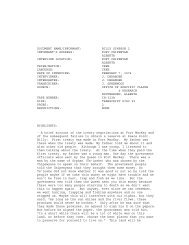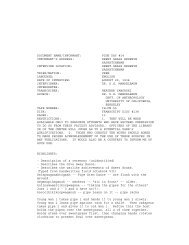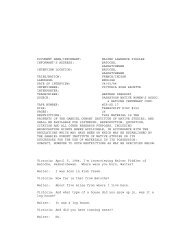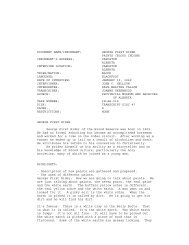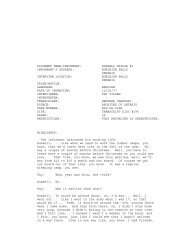Contents of It's not All in Your Head by Asmundson and Taylor
Contents of It's not All in Your Head by Asmundson and Taylor
Contents of It's not All in Your Head by Asmundson and Taylor
You also want an ePaper? Increase the reach of your titles
YUMPU automatically turns print PDFs into web optimized ePapers that Google loves.
y T3 (see Table 3). Scores on the SHAI were the only SHB scores that were outside the<br />
healthy normative range at T1, therefore, the other study measures could <strong>not</strong> be assessed<br />
for cl<strong>in</strong>ical significance. Based on the SHAI results, treatment helped participants to<br />
decrease their cognitive (disease preoccupation, hypervigillance to bodily sensations,<br />
somatosensory amplification), somatic (anxiety-related bodily sensations), behavioural<br />
(reassurance seek<strong>in</strong>g <strong>and</strong> bodily check<strong>in</strong>g), <strong>and</strong> affective symptoms (excessive worry<br />
about health) <strong>of</strong> health anxiety. However, when compared to the Salkovskis et al., (2002)<br />
healthy normative sample, the participants‘ health anxiety levels were still above the<br />
mean <strong>and</strong> they were <strong>not</strong> fully recovered from their excessive health anxiety. Above<br />
average scores on the SHAI may have rema<strong>in</strong>ed because participants‘ physical symptoms<br />
had <strong>not</strong> disappeared <strong>and</strong> they were still anxious about that or the possibility <strong>of</strong> becom<strong>in</strong>g<br />
ill <strong>in</strong> the future. The beliefs about illness risks <strong>and</strong> <strong>in</strong>dicators <strong>of</strong> disease may take longer<br />
to change <strong>and</strong> the physical symptoms <strong>of</strong> anxiety may rema<strong>in</strong> until these beliefs are<br />
successfully altered.<br />
SHB scores on the MIHT were compared to the healthy normative sample means<br />
reported <strong>in</strong> the Longley et al., (2005) validation study (Table 3). MIHT behavioural<br />
subscale scores were above average at T1 <strong>and</strong> <strong>by</strong> T3 they were approximately average (t<br />
= 4.03, df = 9, p = .002; power = .94 [high power]; see Table 3). Perception subscale<br />
scores were elevated at T1 <strong>and</strong> were also reduced <strong>by</strong> T3 (t = 4.19, df = 9, p = .001; power<br />
= .96 [high power]). On the cognitive subscale, scores at T1 were above average but there<br />
55



